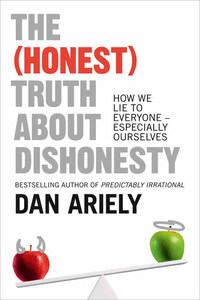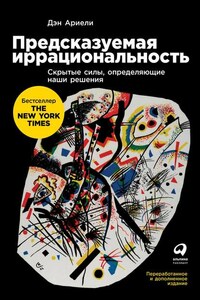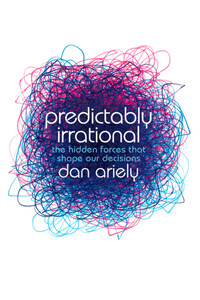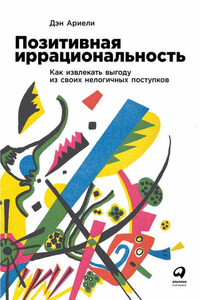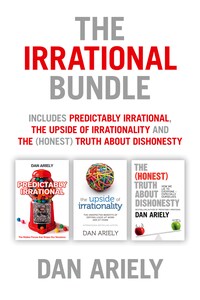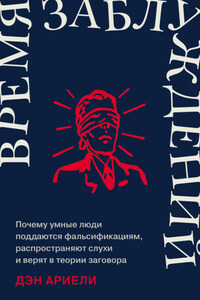Title Page
Dedication
Introduction
Why Is Dishonesty So Interesting?
From Enron to our own misbehaviors ⦠A fascination with cheating ⦠Beckerâs parking problem and the birth of rational crime ⦠Elderly volunteers and petty thieves ⦠Why behavioral economics and dishonesty?
Chapter 1
Testing the Simple Model of Rational Crime (SMORC)
Get rich cheating ⦠Tempting people to cheat, the measure of dishonesty ⦠What we know versus what we think we know about dishonesty ⦠Cheating when we canât get caught ⦠Market vendors, cab drivers, and cheating the blind ⦠Fishing and tall tales ⦠Striking a balance between truth and cheating.
Chapter 2
Fun with the Fudge Factor
Why some things are easier to steal than others ⦠How companies pave the way for dishonesty ⦠Token dishonesty ⦠How pledges, commandments, honor codes, and paying with cash can support honesty ⦠But lock your doors just the same ⦠And a bit about religion, the IRS, and insurance companies.
Chapter 2B
Golf
Man versus himself ⦠A four-inch lie ⦠Whether âtis nobler in the mind to take the mulligan ⦠Schrödingerâs scorecard.
Chapter 3
Blinded by Our Own Motivations
Craze lines, tattoos, and how conflicts of interest distort our perception ⦠How favors affect our choices ⦠Why full disclosure and other policies arenât fully effective ⦠Imagining less conflicted compensation ⦠Disclosure and regulation are the answersâor not.
Chapter 4
Why We Blow It When Weâre Tired
Why we donât binge in the morning ⦠Willpower: another limited resource ⦠Judgment on an empty stomach ⦠How flexing our cognitive and moral muscles can make us more dishonest ⦠Self-depletion and a rational theory of temptation.
Chapter 5
Why Wearing Fakes Makes Us Cheat More
The secret language of shoes ⦠From ermine to Armani and the importance of signaling ⦠Do knockoffs knock down our standards of honesty? ⦠Can gateway fibs lead to monster lies? ⦠When âwhat the hellâ wreaks havoc ⦠Thereâs no such thing as one little white lie Halting the downward spiral.
Chapter 6
Cheating Ourselves
Claws and peacock tails ⦠When answer keys tell us what we already knew ⦠Overly optimistic IQ scores ⦠The Center for Advanced Hindsight ⦠Being Kubrick ⦠War heroes and sports heroes who let us down ⦠Helping ourselves to a better self-image.
Chapter 7
Creativity and Dishonesty: We Are All Storytellers
The tales we tell ourselves and how we create stories we can believe ⦠Why creative people are better liars ⦠Redrawing the lines until we see what we want ⦠When irritation spurs us onward ⦠How thinking creatively can get us into trouble.
Chapter 8
Cheating as an Infection: How We Catch the Dishonesty Germ
Catching the cheating bug ⦠One bad apple really does spoil the barrel (unless that apple goes to the University of Pittsburgh) ⦠How ambiguous rules + group dynamics = cultures of cheating ⦠A possible road to ethical health.
Chapter 9
Collaborative Cheating: Why Two Heads Arenât Necessarily Better than One
Lessons from an ambiguous boss ⦠All eyes are on you: observation and cheating ⦠Working together to cheat more? ⦠Or keeping one another in line ⦠Cheating charitably ⦠Building trust and taking liberties ⦠Playing well with others.
Chapter 10
A Semioptimistic Ending: People Donât Cheat Enough!
Cheer up! Why we should not be too depressed by this book ⦠True crime ⦠Cultural differences in dishonesty ⦠Politicians or bankers, who cheats more? ⦠How can we improve our moral health?
Chapter 11
Some Reflections on Religion and (Dis)honesty
Nondepleting Condition
Depleting Condition
List of Collaborators
Bibliography and Additional Readings
Searchable Terms
Thanks
About the Author
Notes
Other Books by Dan Ariely
Copyright
About the Publisher
INTRODUCTION
Why Is Dishonesty So Interesting?
Thereâs one way to find out if a man is honestâask him.
If he says âyes,â he is a crook.
âGROUCHO MARX
My interest in cheating was first ignited in 2002, just a few months after the collapse of Enron. I was spending the week at some technology-related conference, and one night over drinks I got to meet John Perry Barlow. I knew John as the erstwhile lyricist for the Grateful Dead, but during our chat I discovered that he had also been working as a consultant for a few companiesâincluding Enron.
In case you werenât paying attention in 2001, the basic story of the fall of the Wall Street darling went something like this: Through a series of creative accounting tricksâhelped along by the blind eye of consultants, rating agencies, the companyâs board, and the now-defunct accounting firm Arthur Andersen, Enron rose to great financial heights only to come crashing down when its actions could no longer be concealed. Stockholders lost their investments, retirement plans evaporated, thousands of employees lost their jobs, and the company went bankrupt.
